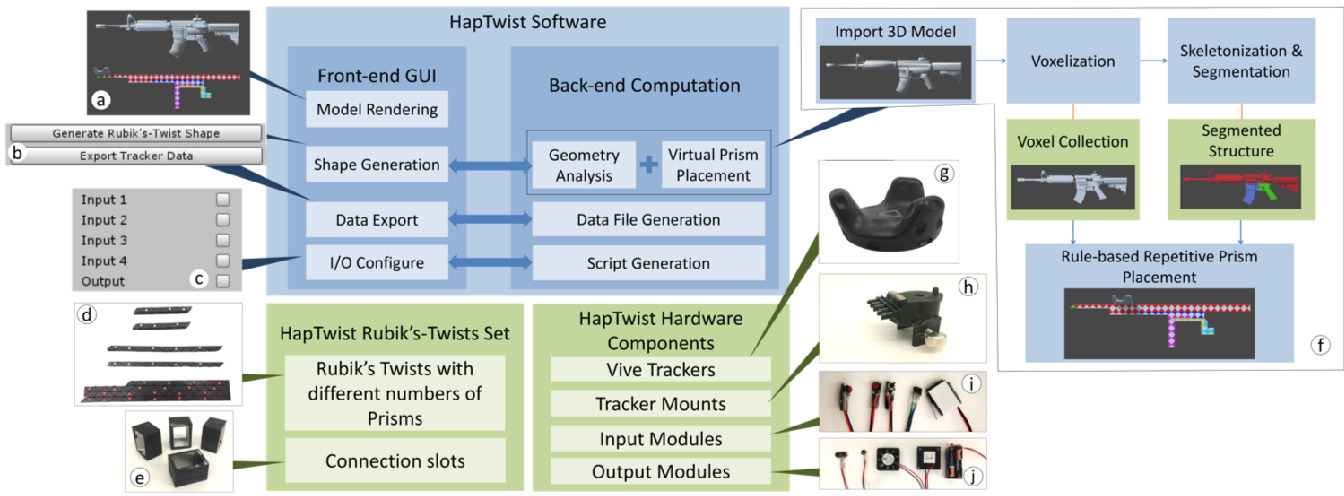
Opportunity
In recent years, virtual reality (VR) has been gaining an increasing amount of attention in the consumer market. However, it remains challenging to use current vibration-based VR controllers to simulate realistic hand-grasping interaction, which often involves different combinations of thumbs, fingers, and palms.
The invention HapTwist toolkit facilitate the design of haptic feedback in the trendy VR domain, and make significant contributions to a large number of applications. The successful implementation of the system can largely reduce the cost and the difficulty of designing haptic proxies for immersive VR, and improve the VR experience for end users. It can potentially make revolutionary impact and benefits on various VR applications, such as architecture, training, education, healthcare, and entertainment.
As a result, it will deliver an efficient yet low-cost design platform for designers to create haptic feedback in VR and for end-users to gain a realistic VR experience. It would be suitable for both in-home small-scale setting and public large-scale installation.
Technology
HapTwist is an interactive toolkit that facilitates the creation of interactive haptic proxies for hand-graspable VR objects. The toolkit leverages Rubik's Twists (RTs, also known as Rubik's Snake), a type of low-cost twistable artefacts. The HapTwist toolkit consists of the algorithm that generates RT-based structures, and a set of software scaffoldings and hardware modules to support the interactivity of the haptic proxies. The HapTwist software interface can generate the RT-based shapes by geometrically analysing the 3D models through voxelization aud skeletonization, and provide guidance for physical construction. With the generated shape, the software allows the user to indicate the attachments of the position tracker and the input/output (VO) hardware components in the physical proxies. The HapTwist hardware modules include a set of RTs with different numbers of triangular prisms, the Vive trackers with 3D-printed mounting structures, and a list of input components (e.g. push buttons, switches, aud triggers) and output components (e.g., flat vibrators, fans, and thermoelectric elements).
Advantages
- Active & Passive Haptics for VR
- Deformable Interface for VR Haptics
Applications
- Immersive VR, such as architecture, training, education, healthcare, and entertainment.
- In-home small-scale setting and public large-scale VR installation.





